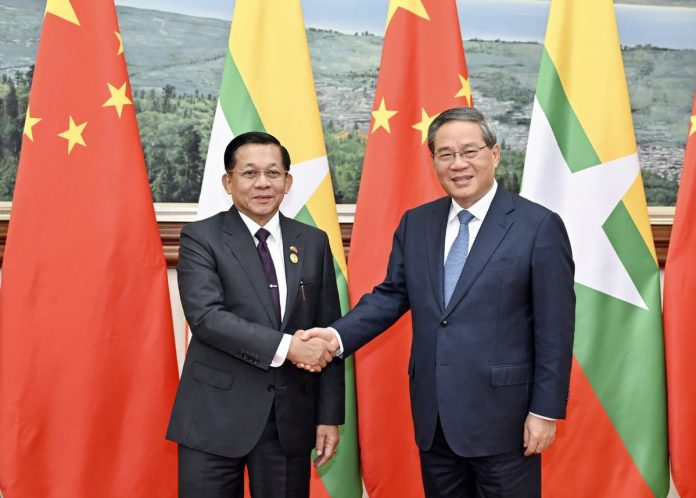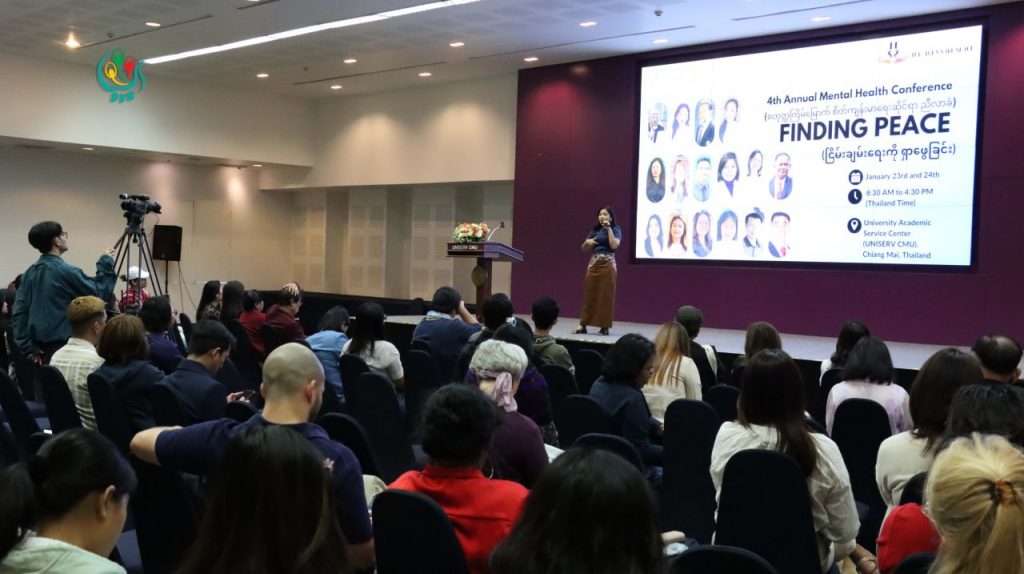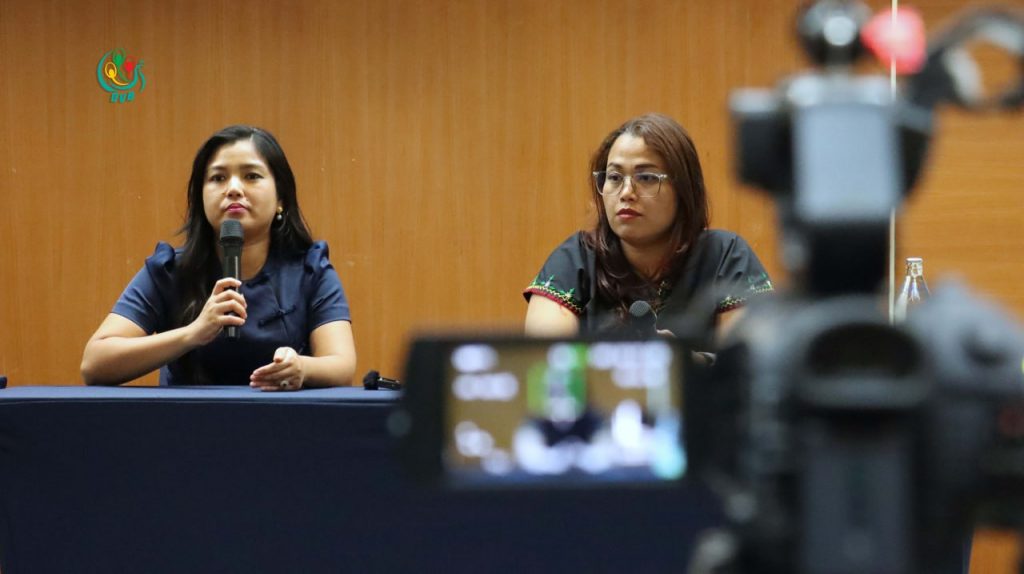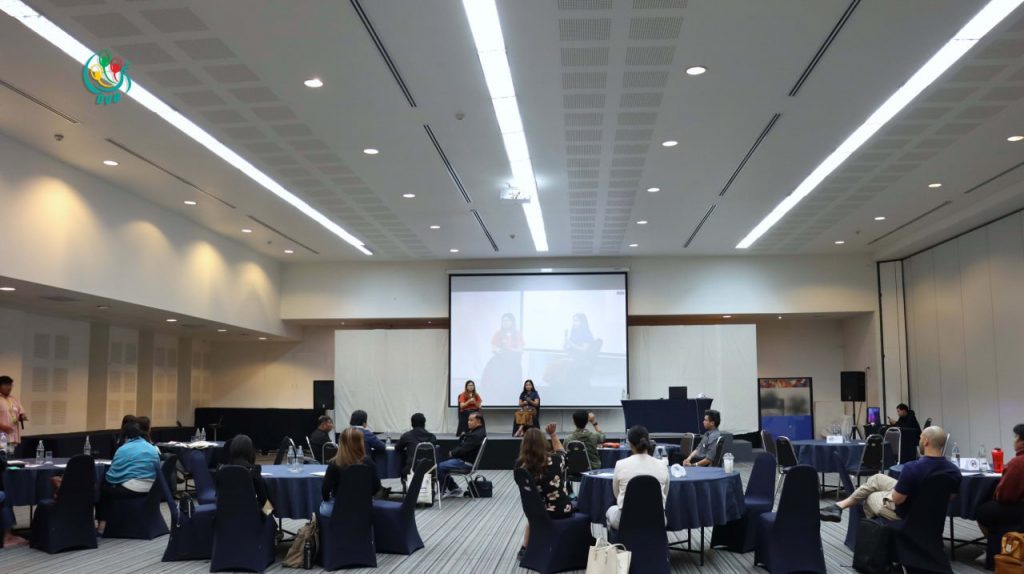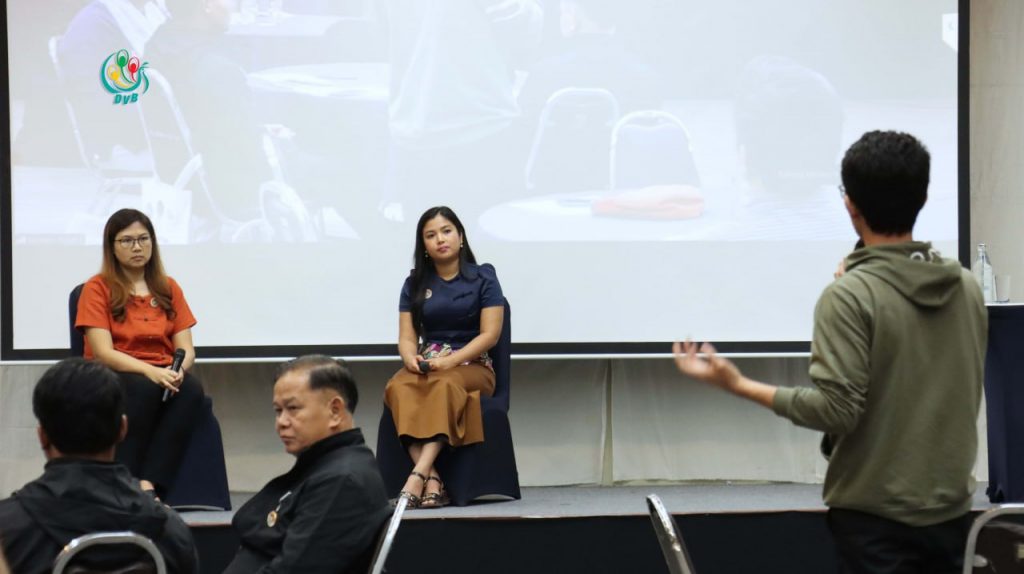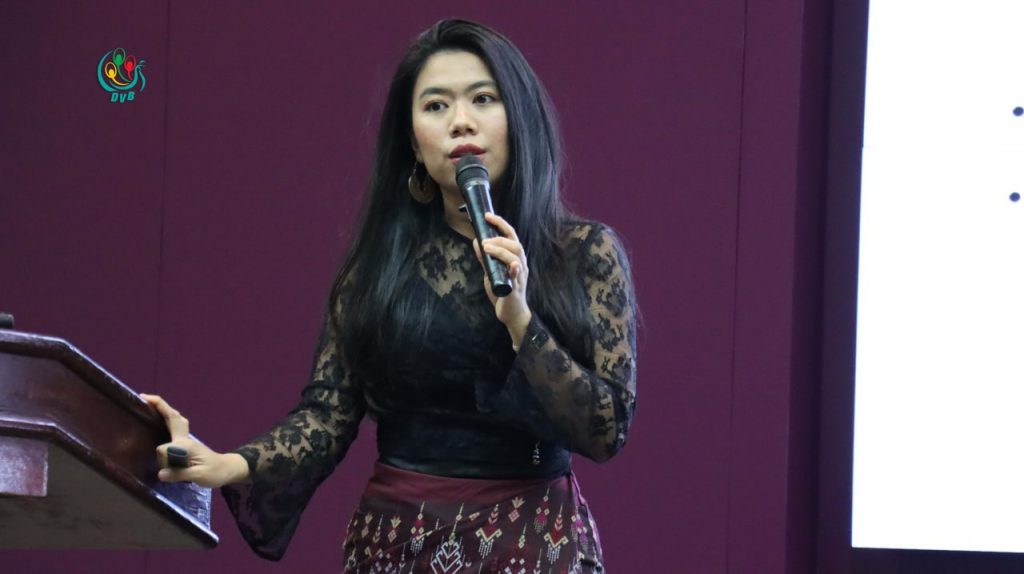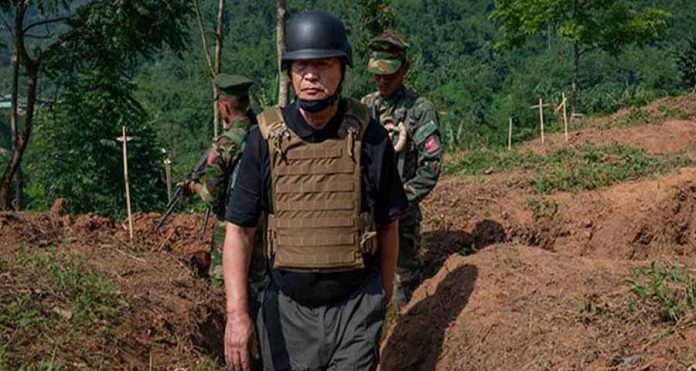Guest contributor
Antonio Graceffo
China’s deep involvement in Burma extends beyond its support for the junta and engagement with groups like the United Wa State Army (UWSA). While these ties protect China’s investments and trade, they serve a larger geopolitical purpose.
With its economy under strain, China’s strategic ties to Burma are vital, particularly as China’s President Xi Jinping works to strengthen the economy ahead of any potential invasion of Taiwan, which could trigger a war with the U.S.
The China-Myanmar Economic Corridor (CMEC) is key to Beijing’s strategy, providing an overland route to the Bay of Bengal that bypasses the vulnerable Malacca Strait.
This route offers a buffer against the sanctions, blockades, and trade disruptions that a Taiwan conflict would likely bring. For China, Burma isn’t just a neighbor—it’s central to its economic and geopolitical survival.
China’s economy faces significant challenges, with slowing growth, rising debt, and struggles in key sectors like real estate and manufacturing. While the government is expected to meet its modest 2024 growth target of “around 5 percent,” this is far below the 8.9 percent annual growth average of just a few years ago.
Industrial production grew 5.4 percent in November, slightly exceeding expectations, but this has done little to improve confidence as fixed-asset investment slowed to 3.3% over the first 11 months, and retail sales grew just 3 percent—their weakest pace in three months.
Foreign direct investment has declined steadily since 2022, reaching its lowest levels in decades, while youth unemployment remains above 17 percent under Beijing’s new metric, with older methods suggesting it exceeds 20 percent.
The property sector, which accounts for about 25 percent of the economy, remains one of China’s biggest challenges. Despite stabilization efforts, it has yet to recover, with total developer liabilities reaching $12 trillion USD in 2023, according to the National Bureau of Statistics.
Beijing’s stimulus measures—such as boosting borrowing, cutting interest rates, and stabilizing stock and property markets—have so far failed to resolve core economic issues or restore consumer confidence.
Economists predict that stronger stimulus measures will be required in 2025 to spur a meaningful rebound, especially as a second Trump administration looms in the U.S. with the prospect of intensified trade wars, higher tariffs, and new sanctions.
However, even aggressive stimulus is unlikely to resolve structural issues like the property sector’s prolonged slump or the country’s severe demographic challenges, as China grapples with one of the worst aging crises in the world.
China’s Gross Domestic Product (GDP) growth is forecast to slow further to 4.5 percent in 2025, with new U.S. tariffs potentially shaving off up to one percentage point. Moody’s recently revised its 2025 GDP forecast to 4.2 percent, underscoring the difficulties ahead for the world’s second-largest economy.
While a weakening Chinese economy may delay an invasion of Taiwan—a potential relief for Taipei—it could spell trouble for Burma. As China’s economic challenges grow, so does the importance of safeguarding its economic interests in Burma.
President Xi, driven by his personal ambition to rank alongside Mao Zedong and Deng Xiaoping as one of China’s paramount leaders, has tied his legacy to promises of economic prosperity and the “great rejuvenation” of China.
This vision includes reclaiming territories once claimed by the Republic of China, such as disputed areas in Mongolia, India, Russia, and the South and East China Seas, as well as territory contested with Japan.
Ironically, while President Xi has made Taiwan the centerpiece of his rejuvenation agenda, Taiwan was never part of the Republic of China’s official map when it was established in 1912.
Despite this historical inconsistency, President Xi views the seizure of Taiwan as essential to achieving his vision. Faced with a slowing economy and the inability to deliver the standard of living enjoyed by citizens of the U.S. or other Western nations, he may see taking Taiwan as the singular act that could secure his legacy.
However, before President Xi can turn his full attention to Taiwan, he must first succeed in Burma. Ensuring stability and control is vital to protecting China’s economic and strategic interests, which have become even more critical as the nation grapples with internal and external pressures.
A military campaign to seize Taiwan would require enormous resources, including funding for troop mobilization, advanced equipment, and logistics. Such an invasion would also likely trigger severe economic sanctions from Western powers, cutting China off from key markets, technology, and financial systems.
Compounding the challenge is China’s heavy reliance on energy and raw materials imported through vulnerable maritime routes, particularly the Malacca Strait. Any disruption to these routes could cripple China’s economy during a prolonged conflict.
The China-Myanmar Economic Corridor (CMEC) is central to China’s strategy for mitigating these risks. Connecting Yunnan Province to the Bay of Bengal through Myanmar, CMEC provides an overland trade and energy route that bypasses the Malacca Strait, a critical chokepoint that could be blocked during a Taiwan conflict.
Infrastructure projects like the Kyaukphyu deep-sea port and oil and gas pipelines ensure energy supplies and maintain trade flow even if maritime routes are disrupted. For President Xi, completing CMEC is imperative, as it would buffer China’s economy against sanctions and trade blockades, reducing its vulnerability to external pressure during a military confrontation.
Beijing’s involvement in Myanmar’s Shan and Arakan (Rakhine) states is driven by its economic interests, particularly the success of the CMEC. In Shan State, Beijing seeks to protect its border trade and access to resources like jade and rare earth minerals.
However, conflicts involving ethnic armed organizations (EAOs), such as the Ta’ang National Liberation Army (TNLA) and the Myanmar National Democratic Alliance Army (MNDAA), disrupt Chinese investments and trade. Similarly, in Arakan State, the Arakan Army (AA) campaign against the Myanmar military pose risks to CMEC projects, including the vital Kyaukphyu deep-sea port.
To stabilize Myanmar, Beijing has backed the junta’s 2025 elections under the military-drafted 2008 constitution and pressured EAOs to halt offensives. By December 2024, groups like the MNDAA and the TNLA had agreed to a China-brokered ceasefire. However, the AA continues its fight, recently capturing a strategically important regional military headquarters in Arakan State – the second to fall in Myanmar over the last four months.
Beijing views a ceasefire, support for junta-led elections, and economic aid as the fastest path to completing the CMEC, a critical project for China’s economic resilience and strategic ambitions.
While publicly advocating for peace and democracy, China’s actions reveal a pragmatic focus on securing its interests. Whether through backing select EAOs, deploying private security forces, or endorsing sham elections, Beijing remains committed to the success of CMEC.
Despite this determination, China’s efforts to stabilize Myanmar have largely backfired. Pressure on EAOs and support for the junta have fueled anti-China sentiment and diminished its influence.
The reported detention of Peng Daxun, the MNDAA leader, has further alienated Beijing’s proxies, forcing them to choose between ceasing resistance or risking retaliation.
Meanwhile, the broader resistance coalition rejects the junta’s elections and remains unwilling to negotiate, leaving Beijing’s strategy mired in setbacks and growing instability.
Antonio Graceffo, PhD, holds advanced degrees in economics and national security. A graduate of American Military University, he has spent more than 20 years in Asia, contributing to think tanks and international media.
DVB publishes a diversity of opinions that does not reflect DVB editorial policy. We’d like to hear what you think about this or any of our stories: [email protected]


